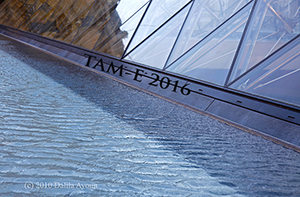Traditionally, tense and aspect are seen as separate linguistic categories, however this distinction is well-known to be difficult to uphold when confronted with linguistic data. This paper takes a typological stance on this matter, empirically examining the status of aspect as a crosslinguistic descriptive category.
A common way of conducting crosslinguistic studies is by setting up a number of “comparative concepts” (Haspelmath 2010): conceptual generalizations like ‘time' and ‘past', designed by the linguist to describe conceptual values. Haspelmath (2010) stresses the subjective character of comparative concepts, describing them as “constructs” (Haspelmath 2010: 666) that “cannot be right or wrong” (Haspelmath 2010: 678). According to this view, it is not possible to constrain or evaluate conceptual generalizations. This paper advocates a less subjective approach to crosslinguistic descriptive categories.
Based on Boye (2010, 2012), we first argue that language-specific structure can be used to evaluate conceptual generalizations. One way of doing this is through semantic mapping: it is argued that a conceptual generalization is relevant for crosslinguistic structural description if, in a semantic map, the comparative concepts covered by the generalization form a continuous area. Thus, semantic-map continuity is proposed as a criterion for upgrading pure conceptual generalizations to crosslinguistic descriptive categories in the sense of conceptual generalizations that are significant for the description phenomena found in geographically and genetically distinct languages.
Following the same practice as van der Auwera & Plungian (1998) in their analysis of modality, a semantic map of aspect is constructed based on data from 76 languages extracted from Bybee & al. (1994). It is demonstrated that aspect does not show semantic-map continuity and can thus not be regarded as a crosslinguistic descriptive category. The paper ends by stating possible reasons for the results and discussing theoretical and practical consequences for further studies.
- Autre

 PDF version
PDF version
